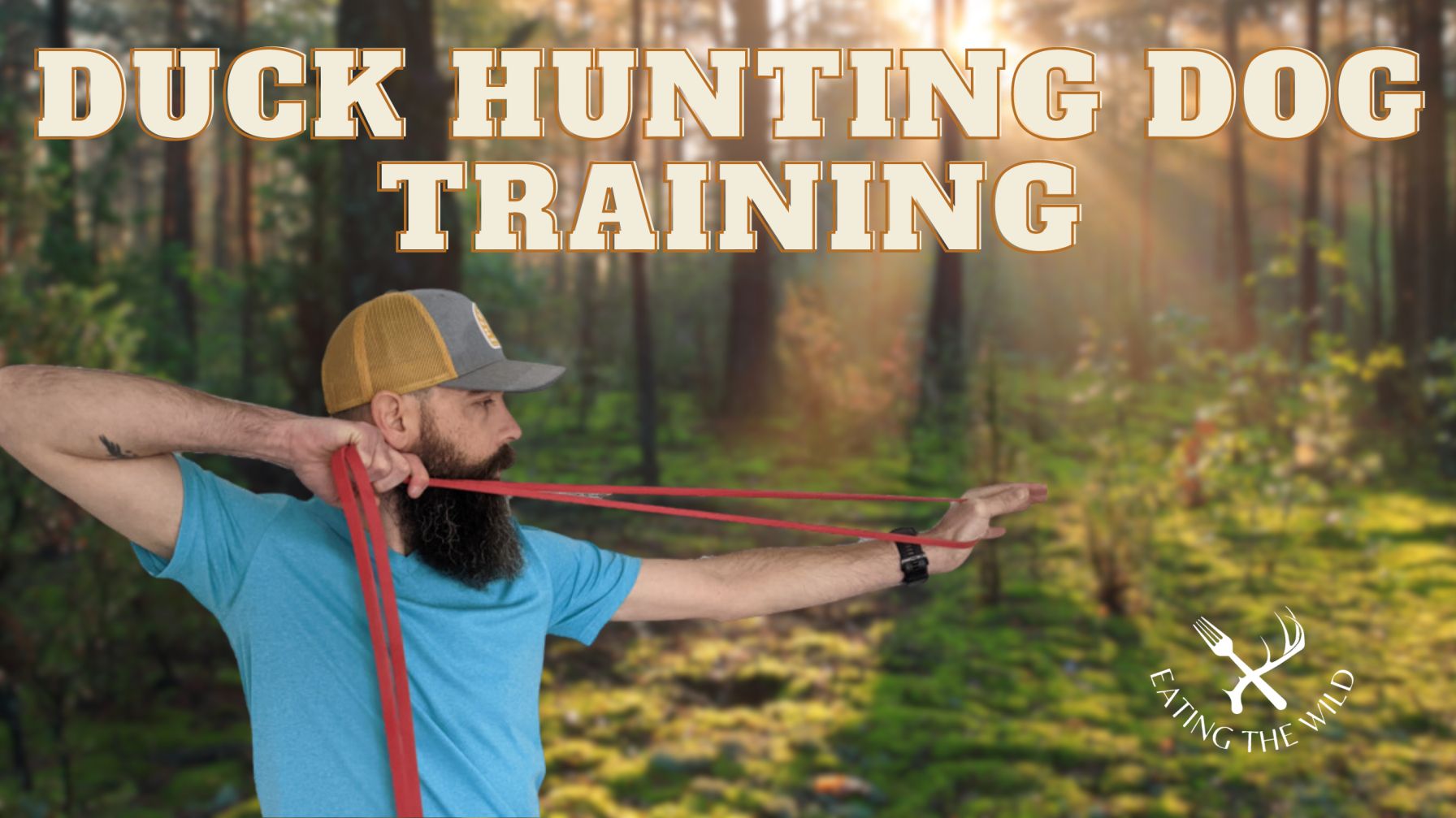
Archery, known for its qualities, demands not only mental acuity but also remarkable physical strength.
Excelling in bowhunting and archery isn’t just about mastering the bow; it’s about conditioning the body and mind to work in harmony. To enhance your proficiency and increase your odds of success in this challenging sport, integrating a dedicated archery training regimen into your daily routine is essential.
In this article, we have added the necessary stuff to help you improve your shooting skills, fortify your physical strength, and sharpen your mental focus, ensuring you’re well-prepared for every challenge that comes your way in the field.
What Muscles Are Used in Bow Hunting?
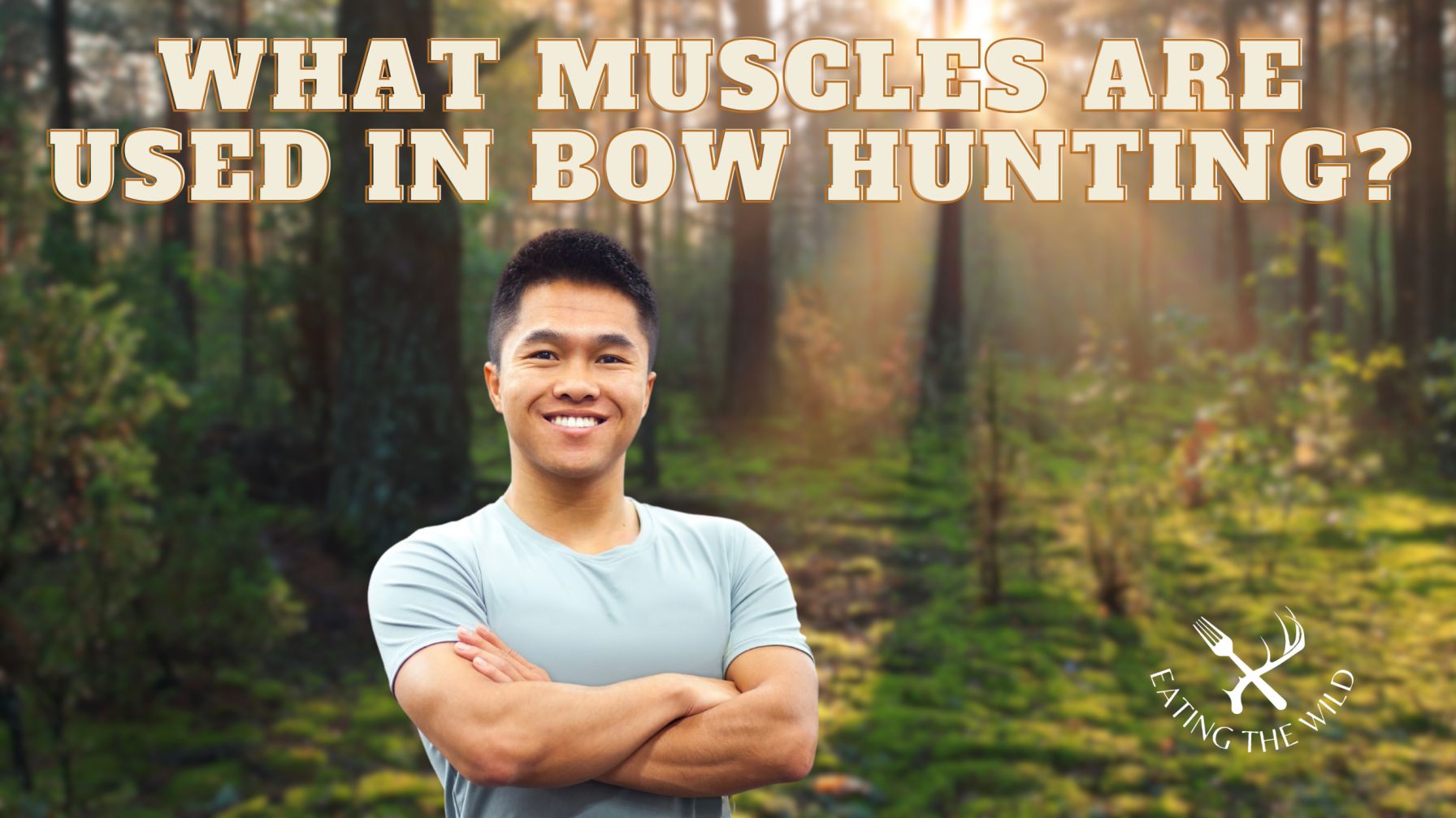
Bow hunting and archery require the use of several key muscles in the upper body, which are crucial for drawing and holding the bow, as well as maintaining stability and accuracy while shooting.
Shoulder Muscles:
The rotator cuff muscles, including the infraspinatus and teres minor, are essential for shoulder stability and drawing a bow.
The deltoid muscle, covering the top of the shoulder, is divided into anterior, middle, and posterior sections, each playing a specific role in the movement of the arm during archery.
Back Muscles:
The latissimus dorsi and rhomboid muscles are significant for drawing and holding a bow.
The rhomboids, levator scapulae, and trapezius are major muscle groups used for back tension, especially at full draw.
Arm Muscles:
Forearm muscles, including the brachioradialis and pronator teres, are important for gripping and holding the bow.
The biceps assist in flexing the elbow and lifting the arm forward, while the triceps are used mainly on the bow arm to push the bow to full extension and keep the elbow straight during the holding phase.
Chest Muscles:
Though not directly involved in drawing the bow, strong chest muscles help stabilize the upper body and maintain proper posture while shooting.
Wrist and Hand Muscles:
These muscles, such as the flexor carpi ulnaris and flexor digitorum superficialis, contribute to the overall strength and stability needed for accurate shooting.
Tips To Getting Started
Begin Slowly:
Start with exercises that suit your current strength and ability.
Beginners should initially perform exercises without weights, focusing on movement to build muscle endurance and strength gradually.
Core Exercises:
Incorporate exercises that target the upper body and core, as these are crucial for archery.
Examples include one-arm dumbbell rows, bench dips, and variations of push-ups.
Specific Workouts:
Shoulder Workouts:
Exercises like shoulder presses, lateral raises, and external rotations are great for building shoulder strength.
Back Workouts:
Pull-ups, rows, and lat pulldowns effectively target back muscles necessary for bow hunting.
Forearm Workouts:
Wrist curls, reverse curls, and grip strength exercises strengthen the forearm muscles.
The Warm-Up: Dial In Your Bow’s Draw Length and Balance
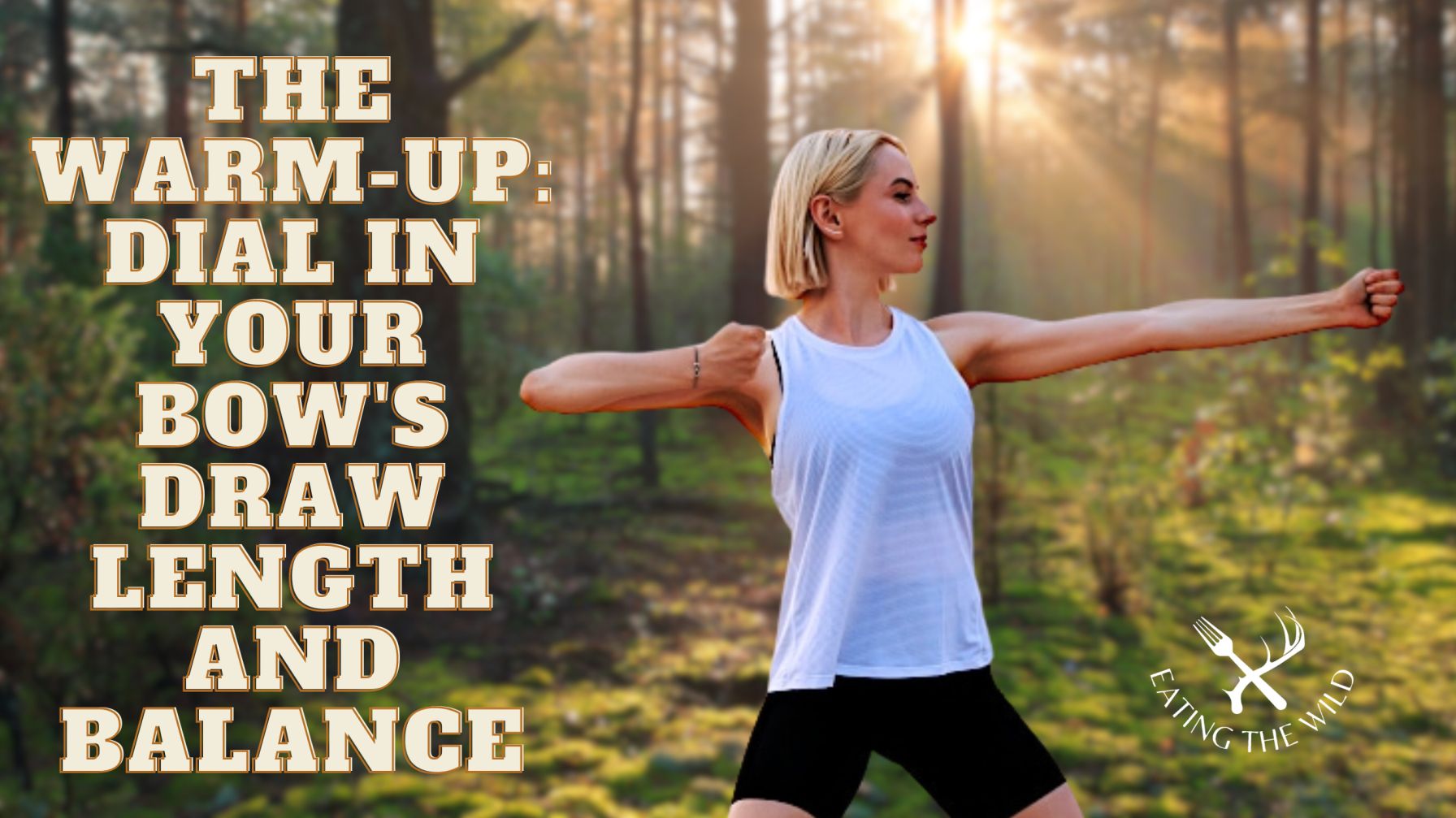
To optimize your bow hunting skills, it’s crucial to have a comprehensive training program that includes both physical warm-ups and specific bow drills.
Here’s a detailed guide based on the information from Field & Stream, Archery360, and The Fair Chase.
Warm-up № 1: Drill Down On Draw
Assess your bow’s draw length for consistent shots. If shots are sprayed left and right, consider increasing the draw length. For scatter up and down, reduce the length.
Adjust the D-loop for minor tweaks or see a professional for significant changes. Ensure your stance and bow alignment are correct, with little to no bend in the bow arm and proper head alignment.
Warm-up № 2: Adjust Stabilizers To Balance Your Bow
Adjust your bow’s stabilizers to achieve perfect balance, which is essential for accurate shooting.
A longer front bar and a back bar acting as a counterweight can be useful.
Practice drawing and aiming, making adjustments to the stabilizers until the pin settles steadily on the target.
The Workout: Get Your Bow Shooting Great And Practice, Practice, Practice
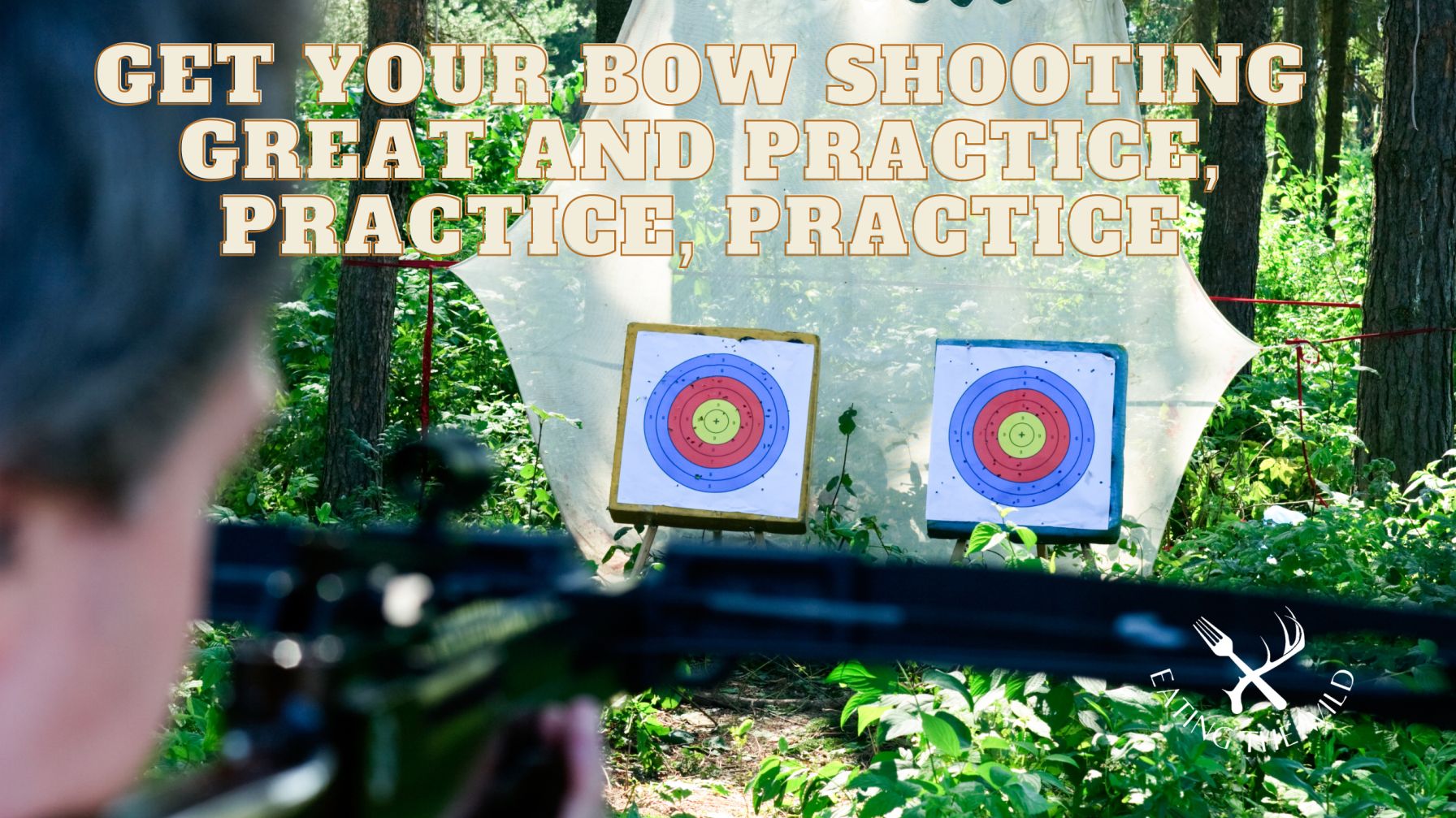
Exercises № 1: Sight In Your Bow—perfectly
Set your bow sights for maximum accuracy.
Use a horizontal line on the target and adjust your pin up or down until your arrows hit or closely align with this line.
Perform the same for left and right adjustments using a vertical line.
Exercises № 2: Learn To Aim Small
Practice aiming at a small target to improve precision.
Start with a larger dot and progressively move to smaller ones, maintaining the pin within the dot for extended periods.
Exercises № 3: Challenge Your Buds To Shoot Dot-to-dot
Engage in a friendly competition with decreasing sizes of target dots, focusing on tightening your groups.
Exercises № 4: Ready, Don’t Aim, Fire
Work on perfecting a surprise release to prevent target panic. This involves focusing solely on aiming without consciously triggering the shot.
Exercises № 5: Go Zero To 60 In A Month
This involves a comprehensive approach to gradually increase your proficiency over a month, blending sighting, aiming, and shooting drills.
3 Workout Routines Every Bowhunter Should Master
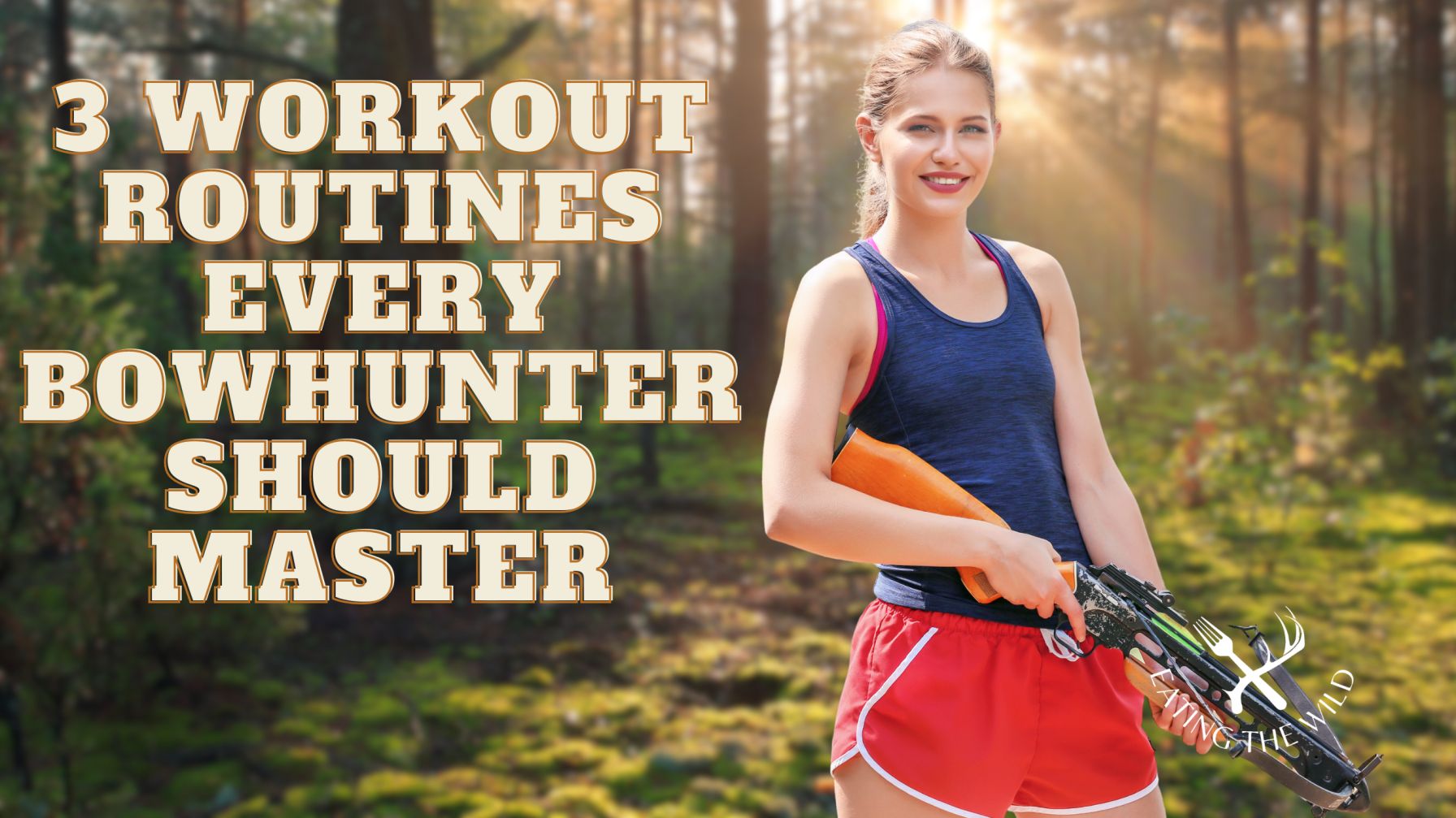
Let’s take a look at the three workout routines that every bowhunter should master:
Workout #1: Hip Health Workout
This workout focuses on strengthening and stabilizing the hip area, which is vital for bowhunters who often traverse uneven terrain.
- Row Ergometer: This machine provides a full-body workout, emphasizing cardiovascular health and endurance. It’s particularly effective for targeting hip flexors and extensors, which are crucial for stability and power during hunting activities.
- Banded Hip Flexors: This exercise targets the hip flexor muscles, crucial for maintaining stability and balance. Using resistance bands adds an element of strength training, which helps in improving muscle tone and flexibility.
- Standing Fire Hydrants: This exercise focuses on the outer glutes and hip muscles. It’s excellent for improving hip mobility and stability, which are essential for walking and balancing in uneven terrains.
- Single Leg Hamstring Curls: This exercise isolates the hamstrings, providing strength and flexibility. It’s particularly beneficial for movements that require bending and stability, such as crouching or moving through brush.
Workout #2: Shoulder Health Workout
Shoulder health is critical for bowhunters, as it directly impacts the ability to draw and hold a bow steadily.
- Assault Bike: This exercise provides a high-intensity cardiovascular workout that also engages the upper body, including the shoulders.
- Renegade Rows: This compound exercise works multiple muscle groups at once, including the shoulders, back, arms, and core. It’s excellent for improving upper body strength and stability.
- TRX Y’s: Using the TRX system, this exercise targets the upper back and shoulder muscles, focusing on the stability and mobility of the shoulder girdle.
- Push-Up +: An advanced form of the traditional push-up, this variation involves an additional push at the top to engage the serratus anterior, a key shoulder stabilizer.
- Weighted Superman: This exercise strengthens the upper and lower back muscles along with the shoulders, improving overall back strength and posture, which is vital for bowhunting.
Workout #3: Mountain Man Workout
This routine is designed to simulate the conditions of mountain hunting, focusing on lower body strength and endurance.
- Treadmill Incline/Decline Walking: This mimics the uphill and downhill walking common in mountain hunting. It’s excellent for building endurance and strength in the legs.
- Lateral Step-Ups: This exercise targets the side glutes and thighs, muscles that are crucial for lateral movement stability, especially on uneven terrain.
- Walking Lunges: This functional exercise improves lower body strength, balance, and coordination. It’s particularly beneficial for movements that require leg strength and stability, such as climbing or traversing steep inclines.
Exercise Equipment: Get The Right Gear For Accuracy
To improve accuracy and performance in bow hunting, incorporating specific exercises into your training routine is crucial.
Here are some recommended exercises and equipment tailored for bowhunters:
Lateral Shoulder Raise, Heels Up:
This exercise improves shoulder strength and endurance, essential for maintaining a full draw.
Performing this with heels off the ground also improves calf strength and balance, beneficial for uneven terrains encountered during hunting.
Side Plank with Feet in Rope:
A side plank is an excellent exercise for enhancing lateral stability. It strengthens the muscles along your sides, from your ankle to the top of your shoulder, which is vital for maintaining balance in various hunting scenarios.
Y-T-W-L Exercises:
This series of exercises targets your posterior shoulder girdle, crucial for pulling strength and shoulder health.
It involves making different arm positions like ‘Y’, ‘T’, ‘W’, and ‘L’ to work various muscles in the upper back and shoulders.
Deadlifts:
Deadlifts are a great overall body strengthening exercise. They primarily focus on the core and also work on thighs, hamstrings, glutes, back, shoulders, and grip.
These muscles are extensively used in activities like hiking, climbing, and dragging game.
One Arm Rows:
This exercise is excellent for mimicking the motion of drawing a bow.
It focuses on strengthening the back muscles, which are crucial for a smooth and consistent draw.
Bent Over Rows:
Similar to one-arm rows, bent-over rows aid in the draw by working the back muscles while maintaining a tight core.
This exercise is key for the controlled movements required during hunting.
Push-Ups:
Push-ups are essential for balancing the muscle development in your upper body, particularly countering the pulling motion of drawing a bow with a pushing motion.
They also engage the core, adding functional fitness to your routine.
Russian Twists:
This exercise is particularly beneficial for situations where you might need to twist or turn to line up a shot. It strengthens the core muscles, aiding in achieving and maintaining those awkward positions.
Bonus: 6 Resistance Band Exercises for Bowhunters
Resistance band exercises are a great way for bowhunters to improve their strength and flexibility, especially in muscles relevant to archery. Here are six exercises specifically tailored for bowhunters:
Bow Row:
This exercise simulates the motion of drawing a bow. Stand with your feet shoulder-width apart and loop the resistance band under your feet. Hold the ends of the band with your hands, palms facing each other.
Bend your knees slightly, hinge forward at the hips, and keep your back straight. Pull the band towards your waist, retracting your shoulder blades, then slowly release. This exercise targets your back muscles, essential for drawing a bow.
“Just a Forky” Shrug:
This exercise focuses on the trapezius muscles, which are important for maintaining a steady posture while holding a bow. Stand on the middle of the band with feet shoulder-width apart, holding the ends of the band with your hands at your sides.
Keeping your arms straight, elevate your shoulders towards your ears in a shrugging motion, then slowly lower them back down.
“Tailgate” Chest Press:
This exercise works on the pectoral muscles, crucial for stabilizing the bow during a shot. Anchor the resistance band at chest height (like on a door handle or post).
Facing away from the anchor point, hold the ends of the band with your arms bent at 90 degrees and elbows aligned with your shoulders. Push forward until your arms are fully extended, then slowly return to the starting position.
“Buck Down” Shoulder Press:
Targeting the deltoids, this exercise enhances shoulder stability. Stand on the middle of the band and hold the ends with your hands.
Starting with your hands at shoulder level and elbows bent, press upwards until your arms are fully extended above your head, then return to the starting position.
“Dramatic” Pull-Aparts:
This exercise strengthens the upper back and shoulder muscles, improving posture and stability for archery.
Hold the resistance band with both hands in front of you at shoulder height, arms extended. Pull the band apart by moving your arms out to the sides, keeping them straight, then slowly return to the starting position.
“Trophy Pose” Curl:
Focusing on the biceps, this exercise is important for arm strength during bow drawing.
Stand on the middle of the band and hold the ends with your palms facing up.
Keeping your elbows close to your body, curl your hands towards your shoulders, then slowly lower them back down.
FAQs on Bow Hunting and Archery Training
Should I train before bow hunting?
Yes, training before bow hunting is highly recommended. Bow hunting requires a unique set of physical skills, including strength, endurance, stability, and flexibility, particularly in the upper body. Training can improve your bow handling, increase draw strength, enhance stability for accurate shooting, and reduce the risk of injury.
Is Archery a Full-Body Workout?
Archery can be considered a full-body workout to some extent, though it primarily targets specific muscle groups. Drawing a bow requires significant upper body strength, engaging muscles in the arms, chest, back, and shoulders. The act of maintaining a steady aim also works the core muscles, contributing to balance and stability.
Should training be regular?
Yes, regular training is essential for archery and bow hunting. Consistency in training helps in developing and maintaining the muscle strength and endurance required for archery. It also aids in honing the skills and techniques specific to bow hunting, such as aim, draw, and release.
